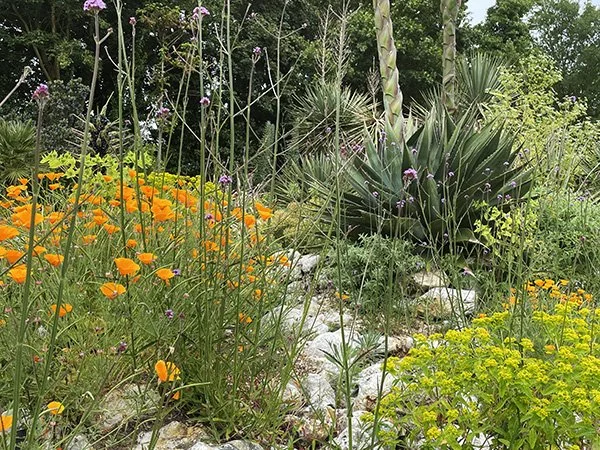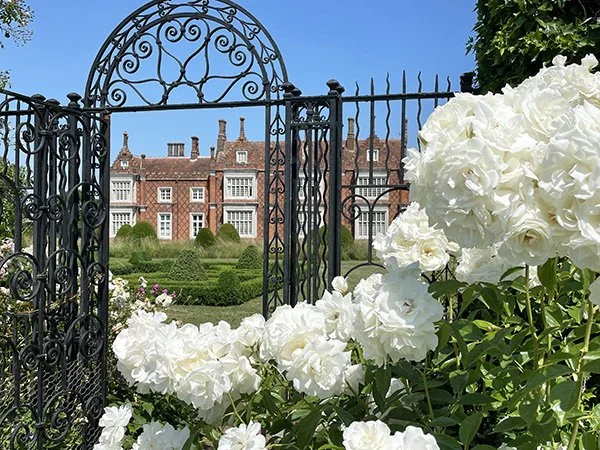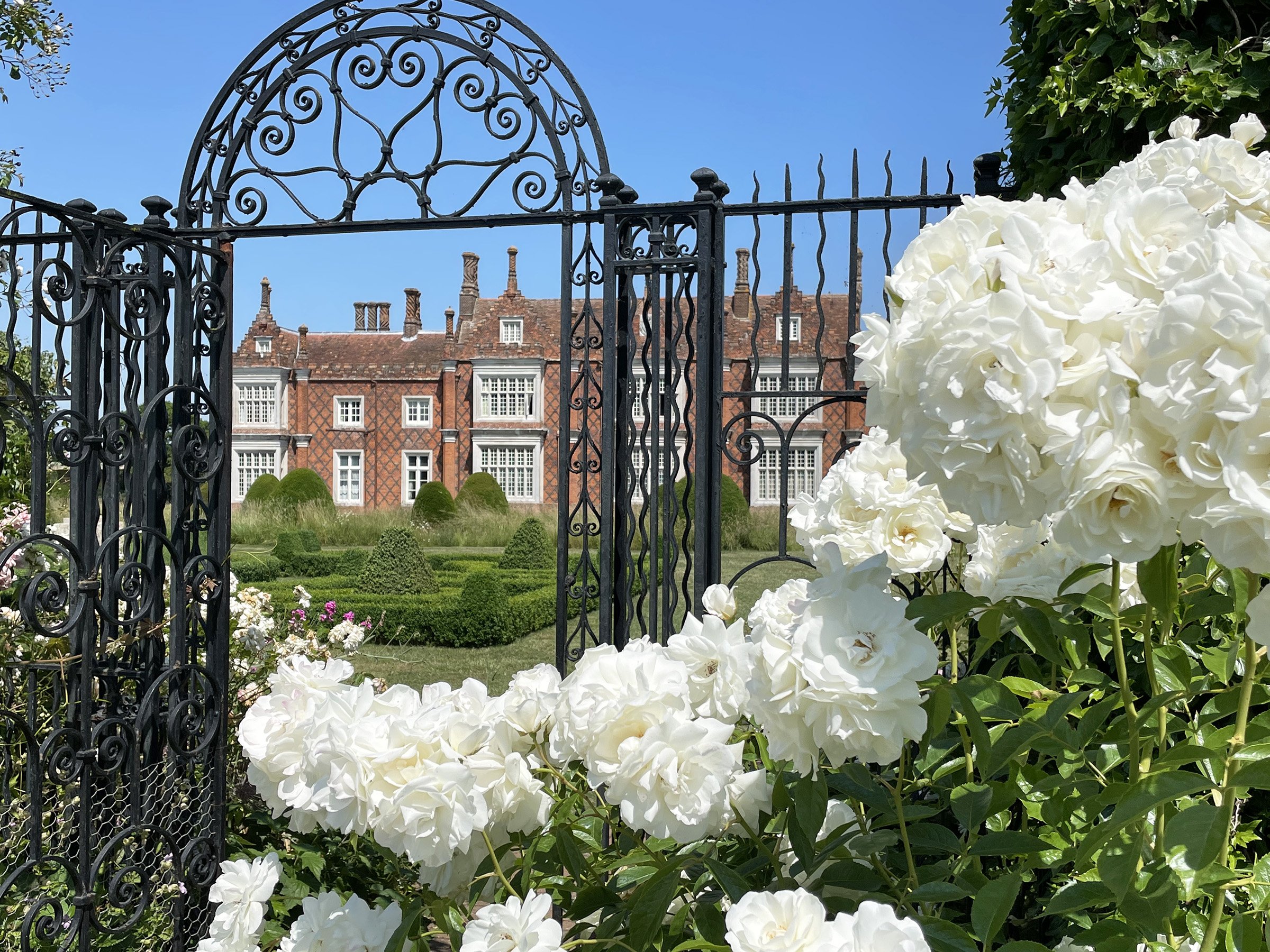
Helmingham Hall
Cambridge & East Anglia
2406 | 13 to 20 June | 8 days | maximum number 10
This tour includes visits to Anglesey Abbey, Blickling Hall, East Ruston Old Vicarage, Stow Hall, Sandringham, Holkham Hall, Houghton Hall, Peter Beales Roses, Helmingham Hall, Beth Chatto Gardens, Flatford Mill, the Place for Plants, RHS Garden, Hyde Hall plus a day in the historic university town of Cambridge, boat trips on the Norfolk Broads and off Blakeney Point, the North Norfolk Coast and Suffolk villages.
Please note that this is a private tour open only to invitees
Big skies, stunning coast, rolling countryside…
Welcome to the Cambridge & East Anglia tour, a celebration of the finest gardens in East Anglia, from the extravagance and unconstrained ebullience of Alan Gray & Graham Robeson’s garden at East Ruston Old Vicarage, in Norfolk, to the quieter, peerless planting qualities of Beth Chatto’s garden in Essex.
East Anglia is the eastern region of England – the bit that sticks out into the North Sea – and comprises the counties of Norfolk, Suffolk, Cambridgeshire and Essex and it was, until we moved to Scotland in July 2022, our adopted home for over thirty years.
We know the area well and, until we moved, this was our ‘home’ tour, a tour which – in its many different versions – we ran ever since we started this business over twenty-three years ago.
East Anglia is great, it’s an ancient landscape firmly rooted in its agricultural past and, as one of Elizabethan England’s great wool areas, its rich farmland provided the wealth that gave us more medieval churches than anywhere else north of the Alps. More than anything though, it’s an honest landscape, it’s not the Cotswolds, and nor does it pretend to be.
Prices
Per person, sharing
3,900 USD
Prices, per person, sharing a double or twin room
Per person, single occupancy
4,960 USD
Prices, per person, for the single occupancy of a double room
Prices, reservations & payments
Please read the Prices, reservations & payments section in the Information & FAQs page and the comments in the additional tour information below the tour itinerary.
Itinerary
Scroll down to see Additional Tour Information – sleeping and eating, general information and a tour area map
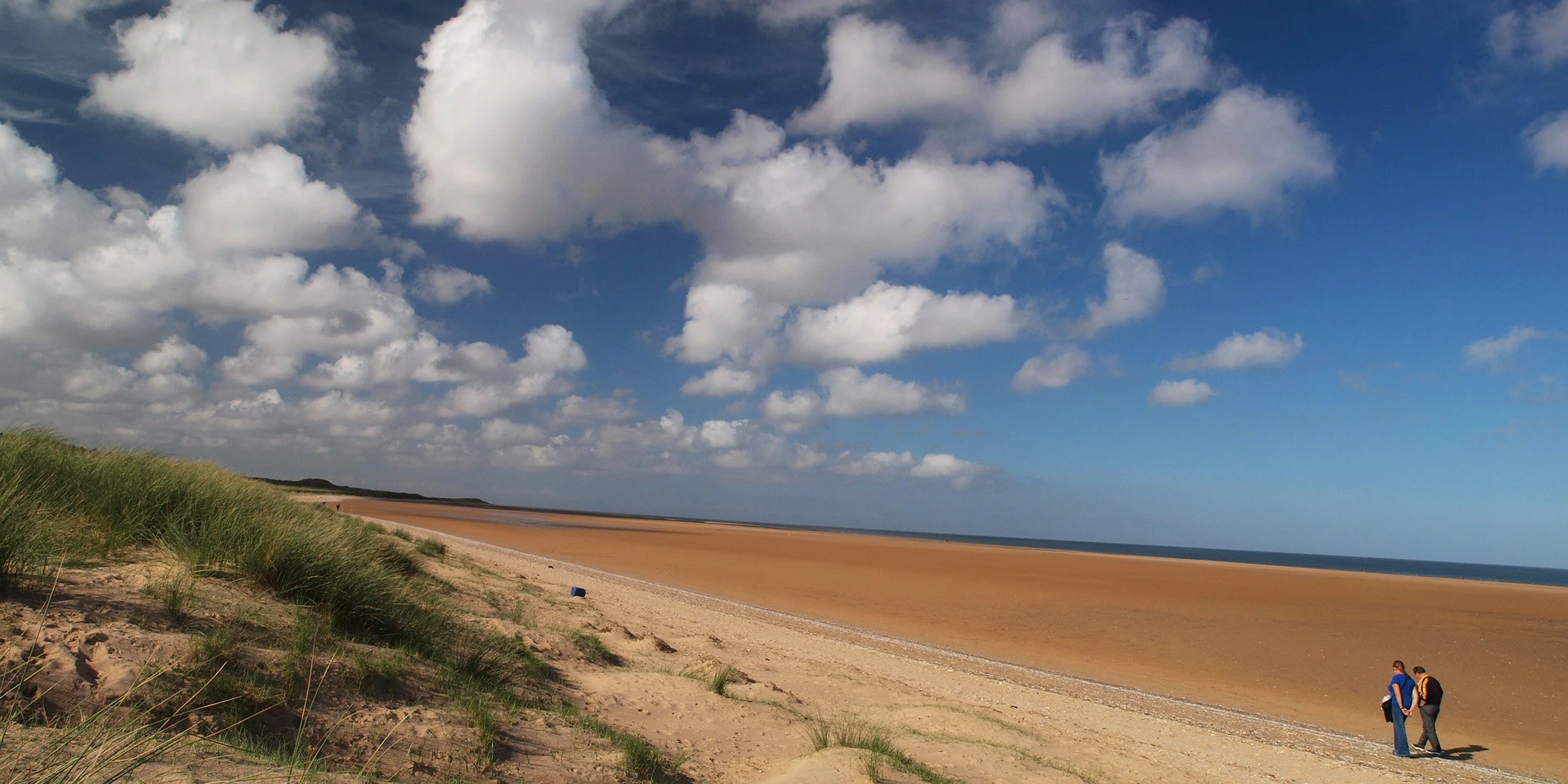
The North Norfolk Coast
Renowned for its spectacular coastline, its glorious beaches, its flora and fauna and its historic villages and market towns, the North Norfolk Coast is a designated Area of Outstanding Natural Beauty (AONB) and a Site of Special Scientific Interest (SSSI) of European importance for wildlife.
Blakeney
Blakeney's sheltered haven brought it international importance and prosperity. It was granted a market charter in 1222 and, other with Cley, Wiveton and Salthouse provided three ships for Edward II’s navy in 1322. By the early 15th century, Blakeney was one of the few ports permitted to trade in horses, gold and silver, which contributed to the town's growing wealth. Land reclamation and the silting up of navigable channels, coupled with increasingly larger vessels, brought its international importance to an end.
Horse Chestnuts, Anglesey Abbey
D1 Thursday, 13 June
Tim will collect you from the Sheraton Heathrow Hotel, immediately north of Terminal 5, Heathrow Airport, and once we are all together we’ll drive northeast, to visit Anglesey Abbey, for lunch and the early part of the afternoon exploring its magnificent gardens.
Founded as the Hospital of St Mary in 1135, it became a Priory until the Dissolution of the Monasteries, when it was sold and became a house. Lord Fairhaven, son of British engineer, Urban Hanlon Broughton, and his American wife, Cara Leland Rogers, daughter of oil tycoon Henry Huttleston Rogers, bought the Anglesey Abbey estate in the 1920s – at auction and unseen – and transformed the gardens. More history here…
Anglesey Abbey is about halfway and we’ll resume our journey north, driving through the Norfolk countryside to Blakeney, a charming former fishing village and a once-important medieval port on the North Norfolk Coast.
We plan to arrive at the Blakeney Manor Hotel, our home for the next four nights, in good time to check in and go for a stroll along the old harbour or out, towards the Point, before drinks and dinner at the hotel.
Today’s driving is approx. 175 miles/280 km
Desert Garden, East Ruston Old Vicarage
D2 Friday, 14 June
We start today at Blickling Hall, a handsome Jacobean house surrounded by its estate – some 4,600 acres of woodland, parkland and farmland – and its 55 acres of formal garden. Reputedly the birthplace of Anne Boleyn, Blickling has had a long and illustrious life, including home to hundreds of RAF and USAAF aircrew during WW2. The estate was the first property given to the nation in lieu of Death Duties. There is a great deal to enjoy in the gardens, the house and the separate Walled Garden which, for four centuries, supplied enough produce to feed the many families that lived and worked on the estate.
Armed with picnics we depart to Wroxham, the self-styled capital of the Norfolk Broads, and take to the water for a couple of hours exploring the Boards.
We’re not far from East Ruston Old Vicarage, one of the most influential contemporary gardens of recent times, where we’ll spend the afternoon. Alan Gray and Graham Robeson bought this remote old vicarage in 1973, using it as a weekend retreat, until 1986 when they made it their home and started gardening. They are meticulous designers and accomplished plantsmen, and have created a wonderfully exuberant and extravagant garden.
We will dine at the nearby Ingham Swan, and drive home along the coast.
Today’s driving is approx. 90 miles/145 km
Rose arches, Stow Hall
D3 Saturday, 15 June
Our day begins with a private visit to the gardens at Stow Hall, the former home of the late Lady Hare. A long-serving Norfolk family, the Hares have been here since 1553 and have gone through several houses, the last being demolished brick-by-brick in the mid-90s. Thankfully, the gardens remain, especially the roses, the magnificent trees and the Walled Garden, with its ancient Mulberry Tree and secret tunnel.
Next stop Sandringham for lunch and the afternoon exploring the house and its garden. Sandringham is owned privately by The King, it having been kept in the family ever since Queen Victoria purchased the estate for Prince Albert Edward’s 21st birthday. It is one of the royal family’s favourite homes and, needless to say, the gardens are superbly maintained.
We plan to return to Blakeney slightly earlier than we might otherwise so that, tides allowing, we’ll take a private boat trip out to Blakeney Point to see the seals – England’s largest grey seal colony, with over 4,000 pups born each winter!
We’ll hire Lily Too, crewed by the Temple family who have been running seal trips for over sixty years, and be back on dry land in time for dinner at The Moorings, on the High Street, around the corner from our hotel.
Today’s driving is approx. 90 miles/145 km

The Norfolk Broads
The Norfolk Broads is one of Britain’s 15 National Parks, and is made up of over 60 open areas of water – known as Broads – and seven rivers, the Ant, Bure, Chet, Thurne, Waveney, Wensum and Yare.
Until the early 1950s, the origin of the Broads had been a mystery. It took a woman, Joyce Lambert, a botanist, to demonstrate that most of the broads were man-made. Using a small peat borer, she discovered that the lakes had vertical walls and relatively flat bottoms – they were medieval peat workings, one for each parish. By the 19th century, the rich boating heritage made them an attractive destination for those who enjoyed the pleasures of boating and, today, it is Britain’s third largest inland navigation area.
“…from Ibiza to the Norfolk Broads…”, Life on Mars? David Bowie
Rose Parterre, Houghton Hall
D4 Sunday, 16 June
We begin the day on the coast at Holkham Hall to visit its Walled Garden, a six-acre garden laid out during the late 1700s and currently part-way through an extensive renovation project. The house itself, a Palladian house, based on designs by William Kent and built by Thomas Coke, 1st Earl of Leicester sits within some 25,000 acres of rolling parkland and remains the home of the Coke family.
From one Palladian house to another, we’ll have lunch and the early afternoon at nearby Houghton Hall, the magnificent Palladian house built in the 1720s for Sir Robert Walpole, Britain’s first Prime Minister. Widely regarded as one of England’s finest houses, Houghton Hall is the home of David Cholmondeley, 7th Marquess of Cholmondeley, and his young family. The Walled Garden, which is one of our favourite spaces, dates only to 1991 and was created as a memorial to Cholmondeley’s grandmother, Lady Sybil. It is divided into several contrasting ornamental gardens, including a spectacular double-sided herbaceous border, an Italian garden, a formal rose parterre, fruit and vegetable gardens, and much more besides.
We will have lunch at Houghton before visiting one or more private gardens open to the public for charity, under the National Gardens Scheme (NGS). Formed in 1927, the National Garden Scheme gives visitors unique access to over 3,500 exceptional private gardens and raises impressive amounts of money for nursing and health charities through admission fees and the sale of teas and cakes. However, NGS doesn’t publish the opening dates until early 2024, but there should be plenty of choice on a summer’s Sunday afternoon in June.
We’ll return to Blakeney for dinner at our hotel.
Today’s driving is approx. 100 miles/160 km
Helmingham Hall from its moated Walled Garden
D5 Monday, 17 June
We depart Norfolk via Peter Beales Roses, the multi-award-winning rose growers and breeders, where we’ll enjoy a short guided tour of their display garden, a good nose around the sales area and morning coffee in their bistro, before continuing our journey south to neighbouring Suffolk.
In Suffolk, we’ll have lunch and the early afternoon at Helmingham Hall, the home and garden of Chelsea Gold Medal-winning garden designer, Xa Tollemache. Her husband’s family, who arrived on these shores with William the Conqueror, has lived here since they finished the hall in 1510.
The hall and garden’s surroundings, each with its own moat, sitting amid its 400-acre deer park, are spectacular enough, but the true star of the show is the walled kitchen garden and its cruciform herbaceous borders. They’re nothing short of spectacular and easily make the grade of one of our favourite gardens, indeed, one of the finest gardens on any of our tours.
We drive through the Suffolk countryside to the Swan at Lavenham, our hotel for the next three nights, where we plan to be in good time to check in and relax before drinks and dinner at the hotel.
Lavenham (see below) is widely regarded as one of England’s finest medieval villages and one of Suffolk’s famous Wool Towns.
Today’s driving is approx. 100 miles/160 km
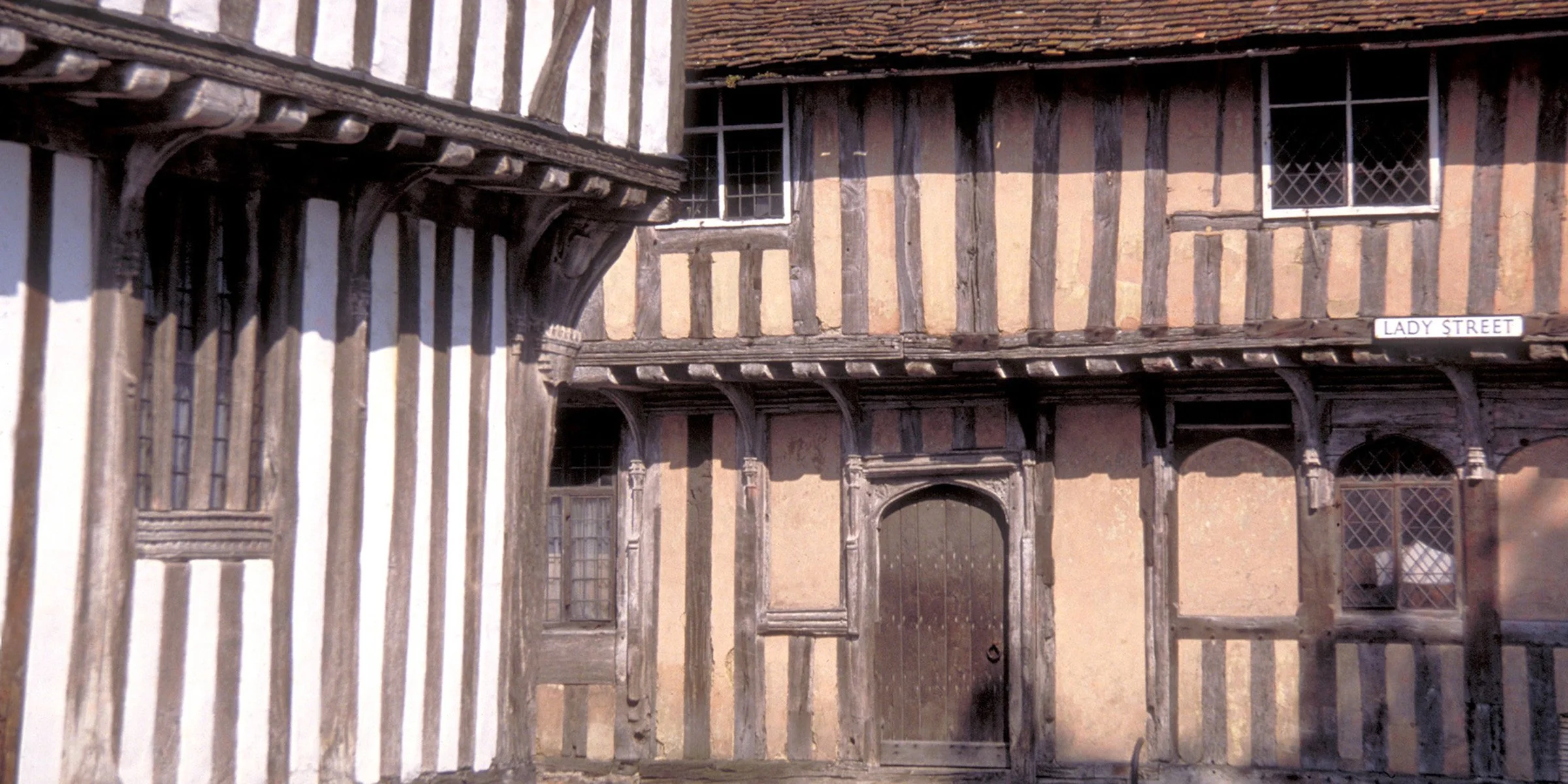
Lavenham
Lavenham is one of England’s best preserved Medieval villages with over three hundred listed buildings.
Its wealth earned from the success of the wool and cloth trade, it was granted its market charter in 1257 by Henry III. Merchants were drawn to the the quality and reputation of Lavenham ‘blew’ broadcloth and, by 1524, Lavenham was the 14th richest town in the country.
Decline started with wars and higher taxes, imports from Italy and Dutch refugees weaving lighter, cheaper and more fashionable cloths. Four hundred years of cloth making was coming to an end.
Newly impoverished, the merchants couldn’t afford to follow new architectural styles and, fortunately for us, their homes remain as they were built – without brick cladding or, worse, without being torn down.
Fan vaulting, King’s College Chapel
D6 Tuesday, 18 June
We spend today in Cambridge – a city, dare we say, that we prefer to Oxford. Sitting astride the River Cam, some 55 miles north of London, Cambridge was an important trading centre during the Roman and Viking ages and, today, it is an important modern and vibrant city at the heart of Silicon Fen, a high-tech hinterland including one of the world’s leading biomedical research clusters.
But it is the University for which Cambridge is most widely known. Founded in 1209, the University is one of the world's oldest teaching establishments and is regarded for its academic achievement. In fact it is a confederation of Schools, Faculties and Colleges supporting more than 20,000 students and over 12,000 staff. Students live, eat and socialise in one of its 31 Colleges, although teaching and research are the responsibility of the Faculties.
We will organise a walking tour of the historic centre of Cambridge, including entrance to King’s College Chapel, with the excellent Footprints Tours, the same company we use in Oxford, and there will be plenty of free time to explore before we meet for afternoon tea at Fitzbillies.
We’ll stay on a while longer, missing the worst of the rush hour traffic and, if everyone is game, we’ll dine at Montaz, a very stylish Indian restaurant, on our way home in Newmarket.
Today’s driving is approx. 100 miles/160 km
Water Garden, Beth Chatto Gardens
D7 Wednesday, 19 June
Before we go anywhere, we’ll spend a couple of hours exploring Lavenham, visiting its medieval Guildhall and Parish Church, and seeking out one or two of its finer houses.
We’ll then set off for Beth Chatto’s Gardens for lunch and the early afternoon. Famously, when Beth wanted to create a garden on the family fruit farm, her husband suggested she try some waste ground, known not to be fertile enough for fruit trees! But, over time, Beth created the internationally renowned gardens we see today. Necessarily perhaps, Beth was an early champion of finding the right plant for the right place and her Gravel Garden, which was once the original car park – and has never been watered – is a clear demonstration of her thinking and skill. It is a wonderful, skilful garden, full of simple, but ever so clever planting.
We’ll end the day in and around Dedham Vale, visiting Flatford Mill, of John Constable fame, and The Place for Plants, Rupert and Sara Eley’s charming garden and plant centre. A keen gardener since childhood, Rupert is the fourth generation of his family to garden at East Bergholt Place, his great-grandfather having started to lay out the gardens at the turn of the last century. They also have lovely homemade cakes!
We will return to Lavenham for drinks and dinner at The Swan.
Today’s driving is approx. 60 miles/100 km
RHS Garden, Hyde Hall
D8 Thursday, 20 June
It’s our final day and, after loading the minibus, we’ll make our way towards Heathrow, stopping for one last visit, at RHS Garden, Hyde Hall, one of the Royal Horticultural Society’s five gardens. Set in a landscape of rolling hills with far-reaching views, Hyde Hall is an oasis of peace and quiet, yet only some 30 minutes from North London. The garden was created in the 1950s by Dr and Mrs Robinson, who started with 60 trees on the hilltop and passed it on to the RHS in 1993. The 360 acres of garden have been transformed and, today, it includes several gardens from the Dry Garden, with drought-resistant plants, to the Hilltop Garden, with roses and herbaceous borders.
The Sheraton Heathrow Hotel, where the tour ends, is about ninety minutes away and we plan to be there in good time for evening flights home. If you are staying in the UK and don't need, or wish, to return to London or Heathrow, then please let us know your onward travel plans, so that we may assist you in getting to your next destination.
Today’s driving is approx. 120 miles/190 km
Additional tour information
Sleeping & eating
We are staying at two hotels, Blakeney Manor Hotel, on the North Norfolk Coast, for the first four nights of the tour, and The Swan at Lavenham, in the heart of the Suffolk countryside, for the final three nights of the tour.
We will dine in, at our hotels, on the first and last evening of each stay and dine out twice in Norfolk, at The Ingham Swan and at The Moorings, and once in Suffolk, at Montaz, a gourmet Indian restaurant in Newmarket.
We will have a picnic lunch and an afternoon tea, the costs of which are included in the price of the tour.
The gardens
As we say in the introduction, this tour is a celebration of the very best East Anglia has to offer and we open the tour in Cambridgeshire at the ever-so-peaceful Anglesey Abbey on our way to the North Norfolk Coast.
In Norfolk, we visit some beautiful gardens, including a couple of world-class gardens at Houghton Hall and at East Ruston Old Vicarage, one of our finest contemporary gardens.
Suffolk gives us Helmingham Hall and Essex both Beth Chatto’s Garden and RHS Garden, Hyde Hall – all top-class gorgeous gardens.
Other attractions
We’ve got boat trips on the Norfolk Broads and to see the seals. We’ll stop in the villages along the coast and, who knows, we may even go for a paddle.
Cambridge is packed with other attractions – everything from the Scott Polar Research Institute to the Fitzwilliam Museum to Kettle’s Yard, the university’s must-see modern and contemporary art gallery.
In Suffolk, we have the whole of Lavenham to explore and, in Essex, we’ll walk along the Stour to Flatford Mill, to see where John Constable painted his most important work, The Hay Wain.
Bedrooms & upgrades
We will generally book standard rooms (however described) for the group, although these may vary from room to room in the hotel.
Single travellers
Single travellers will have their own room, typically a ‘smaller’ double room or, very occasionally, a twin room.
Upgrades
If you would like to upgrade your room, please look at the hotel’s website and then contact us to enquire as to availability.
Punting on the Cam below King’s College Chapel
Good to know
The Swan at Lavenham has a spa, so please pack your swimsuit if that’s your sort of thing.
Further reading
Here are a few additional links to local tourist boards etc, to help set the scene…
Tour area map
Joining instructions
The meeting arrangements, as outlined in Day 1 of the itinerary, above, will be confirmed by email some 8-weeks before the tour.
NB. Where we specify a hotel as the meeting point, it is because of the hotel’s location, the ease of access to it for the minibus and because it affords customers, who are not staying at the hotel, a comfortable and secure environment in which to wait. It is not because we endorse the hotel.
Useful links
Click here for some useful links to other websites, notably websites of our national and regional tourism, heritage, horticultural, cultural organisations, and travel and transport websites.
Please let us know if any website links are dysfunctional. Thank you.
Accuracy & faithfulness
We try to be as accurate as we can, when describing our itineraries, and as faithful to the itinerary as we can, when undertaking the tour, but changes do occur, either necessarily or unavoidably.
Acknowledgements
We would like to acknowledge the assistance of the many guide books and websites we use in planning our tours. Thank you.
“Which road are we on?”
— Tiny, most days…

